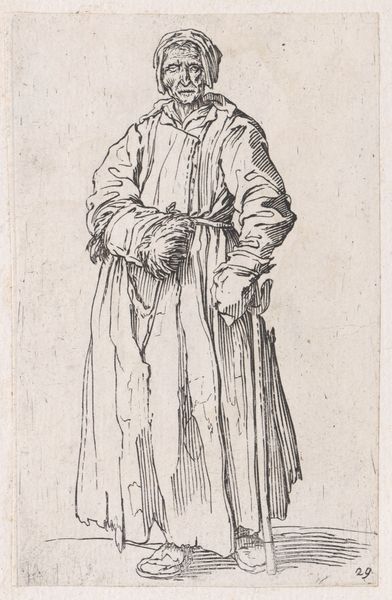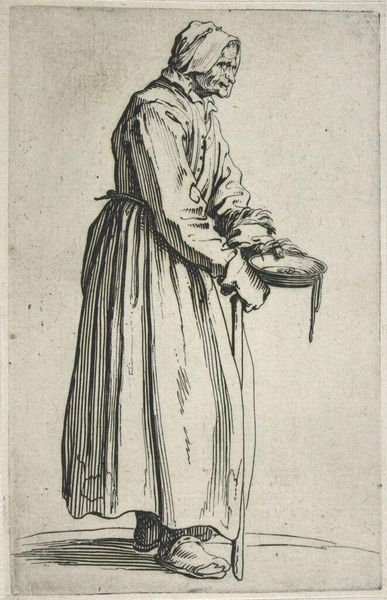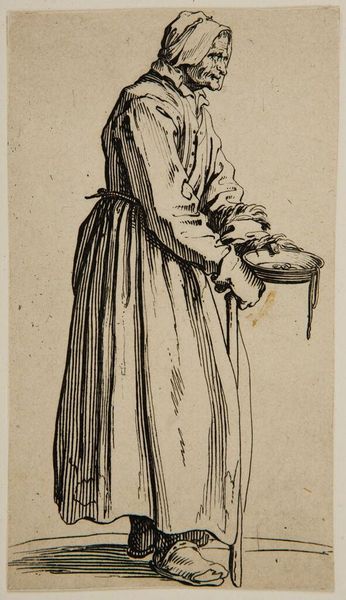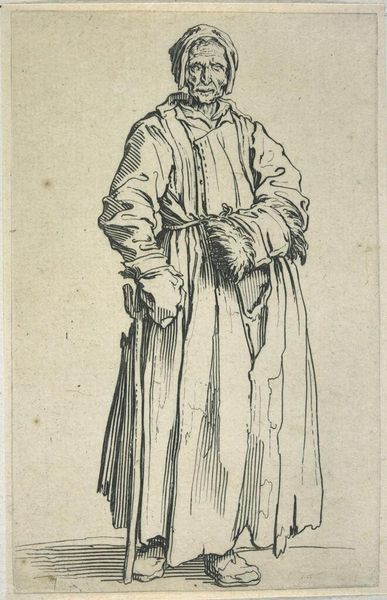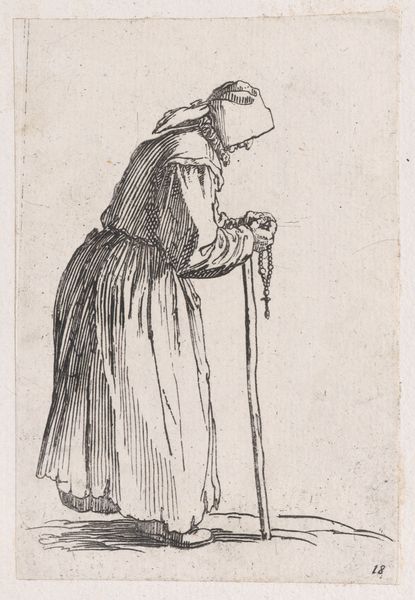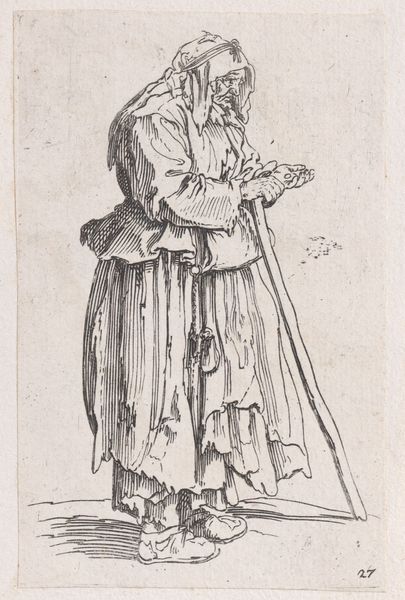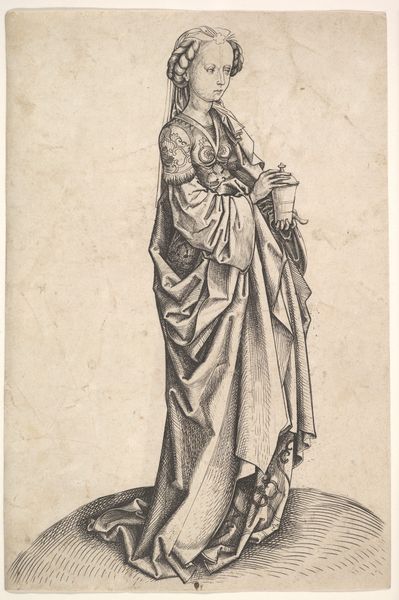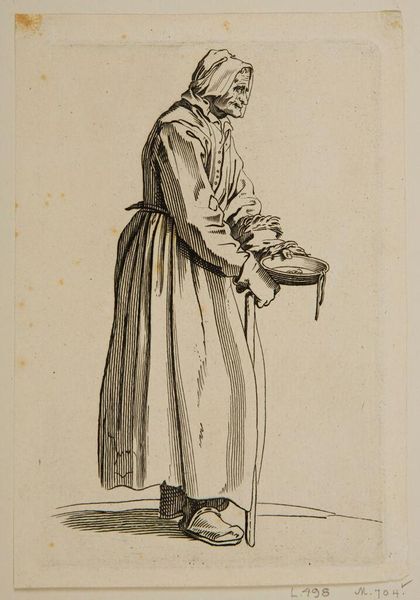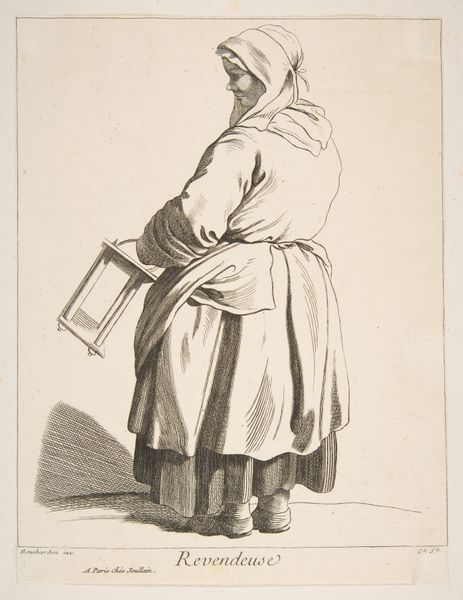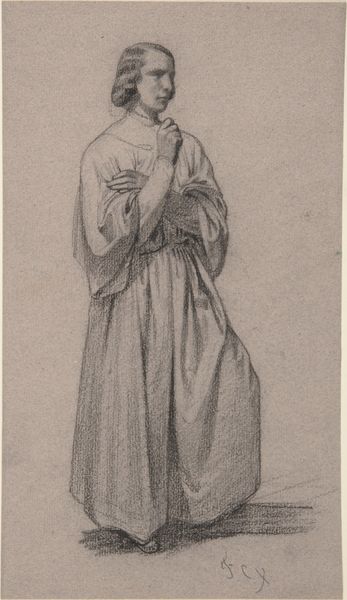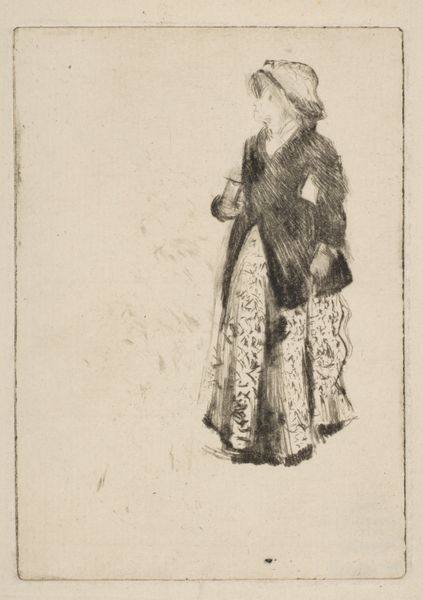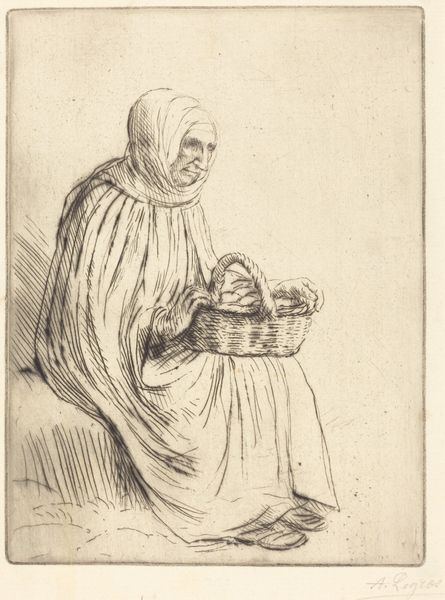
Reverse Copy of La Mendiante a La Sébille (The Female Beggar with The Begging Bowl), from Les Gueux suite appelée aussi Les Mendiants, Les Baroni, ou Les Barons (The Beggars, also called the Barons) 1625 - 1700
0:00
0:00
drawing, print, etching
#
drawing
#
narrative-art
#
baroque
# print
#
etching
#
figuration
#
genre-painting
Dimensions: Sheet: 5 5/16 x 3 7/16 in. (13.5 x 8.8 cm) trimmed and backed
Copyright: Public Domain
Editor: Here we have a rather stark image entitled "Reverse Copy of La Mendiante a La S\u00e9bille (The Female Beggar with The Begging Bowl)" an etching made sometime between 1625 and 1700 by an anonymous artist. The line work creates a distinct sense of weariness. What jumps out to you about the visual composition of this piece? Curator: The strategic use of line is undeniably compelling. Observe how the artist uses the density and direction of lines to articulate form and texture. The folds of the beggar's clothes are rendered through dense, vertical hatching, creating a palpable sense of weight and volume. And notice the reverse copy. It asks us to consider how the act of reproduction affects meaning, shifting our understanding through subtle alterations in the image itself. Editor: So, the technical skill in creating texture and form is significant? Curator: Precisely. Consider the economy of means employed here. With just a few etched lines, the artist suggests the rough texture of the beggar's skin, contrasting it with the smoother surfaces of her clothing. Furthermore, consider the dynamic interplay between positive and negative space. Editor: The figure dominates the composition, doesn't she? It is striking how that singular figure is able to evoke so much with so little. Curator: Indeed, and the emptiness surrounding her intensifies her presence, isolating her in a void that speaks to her marginalized existence. Analyzing the structural relationships between these elements is key to deciphering the artwork’s inherent meaning. What is your view now? Editor: Seeing the relationship between line, texture, and the surrounding emptiness clarifies the skill and intentionality behind the image. Thanks for walking me through the work's components, their relation and contribution to its formal qualities.
Comments
No comments
Be the first to comment and join the conversation on the ultimate creative platform.
